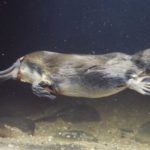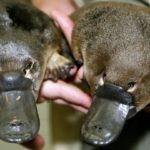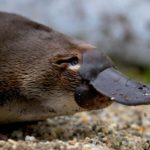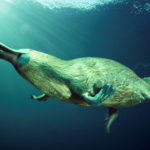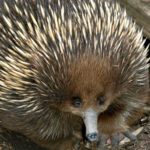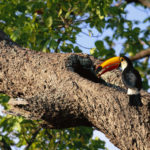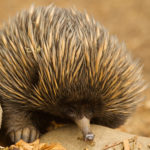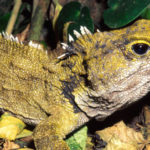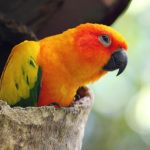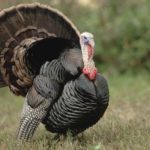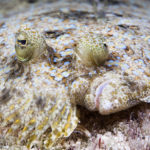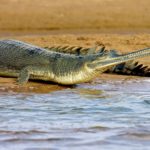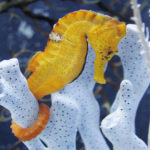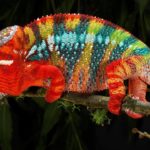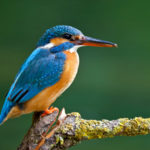Platypus
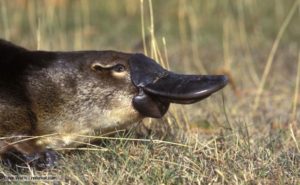 Platypus is the most primitive beast, combining the features of mammals, birds, reptiles and even fish. The platypus is so unusual that it is isolated in a special detachment of the One-pass, in which except for it only vipers and proehids are. However, he does not look very similar to his relatives, that’s why he is the only species in the family of platypus.
Platypus is the most primitive beast, combining the features of mammals, birds, reptiles and even fish. The platypus is so unusual that it is isolated in a special detachment of the One-pass, in which except for it only vipers and proehids are. However, he does not look very similar to his relatives, that’s why he is the only species in the family of platypus.
The first thing that catches your eye when you look at the platypus is the beak. His presence on the body of the beast is so out of place that European scientists at first thought stuffed duck-bills as a fake. But observations of naturalists in nature have proved that the beast with the bird’s beak actually exists. For the sake of justice it is worth noting that the platoon of the platypus is really not quite real. The fact is that his internal device is not like the device of a bird’s beak, the platypus has quite animal jaws, just outside they are covered with skin. But the platypus does not have teeth, auricles, and one of the ovaries is underdeveloped and does not function – these are typical bird features. Also in platypuses, the outlets of genital organs, bladder and intestine open into a common cloaca, so they are called single-pass.
The body of this animal is slightly elongated, but it is rather round and well-fed. Eyes small, auditory canals open on the surface of the body with simple apertures. He hears and sees the platypus is not too good, but his sense of smell is excellent. In addition, the amazing beak of the platypus gives this beast another unique quality – the ability to electro-locate. Sensitive receptors on the surface of the beak can pick up weak electric fields and detect moving prey. In the animal world, only sharks have such abilities. The tail of the platypus is flat and wide and strongly resembles the tail of the beaver. The paws are short, and the membranes are stretched between the fingers. In the water they help the animal to row, and when they leave for the land they fold and do not interfere with walking.
With reptiles of platypuses, there is also a low, unstable body temperature. Unlike most mammals, the body temperature of the platypus is only 32 ° on the average! You can call it warm-blooded with some stretch, besides the body temperature strongly depends on the ambient temperature and can fluctuate within 25 ° -35 °. At the same time, platypus can, if necessary, maintain a relatively high body temperature, but for this they have to move and eat a lot.
The sex system of platypuses is very unusual for mammals: not only does one ovary have a single ovary in females, so they can not bear cubs. Demographic problems platypuses decide simply – they lay eggs. But this sign does not connect them with birds, but with reptiles. The fact is that the eggs of the platypus are not covered with a hard calcareous shell, but with an elastic cornea like in reptiles. At the same time, the platypus feeds its cubs with milk. The truth is, it’s not quite clever of him. Female platypuses do not have decorated mammary glands; instead, the dairy ducts open directly to the surface of the body, they are similar in structure to the sweat glands and the milk simply flows onto the abdomen into a special fold.
The body of the platypus is covered with short brown wool. In these animals, sexual dimorphism is expressed. Males reach a length of 50-60 cm and weigh 1.5-2 kg, females are noticeably smaller, their body length is only 30-45 cm, and weight 0.7-1.2 kg. In this case, the length of the tail is 8-15 cm. In addition, males differ from females spurs on their hind legs. In females, these spurs are present only in childhood, then they disappear, in males their length reaches a couple of centimeters. But the most surprising thing is that these spurs emit poison!
Platypus are endemic to Australia, they live only on this continent and the nearby islands (the islands of Tasmania, Kangaroo). Earlier platypus met in vast areas of southern and eastern Australia, but now because of the severe pollution of the main water system of the continent, the Murray and Darling rivers, they were preserved only in the eastern part of the continent. Platypus breeds a semi-aquatic life, therefore are closely connected with reservoirs. Their favorite habitats are quiet rivers with a calm current and slightly elevated banks, usually flowing through forests. On the coasts of the seas, the banks of mountain rivers with a rapid current and in stagnant marshes the platypus do not live. Platypus saddle, occupy the same section of the river and far from the lair are not removed. They are sheltered by burrows, which animals dig themselves on the shore. Nora has a simple device: it is a sleeping chamber with two entrances, one entrance opens under water, the second – over the water’s edge at an altitude of 1.2-3.6 m in a secluded place (in thickets, under the roots of trees).
Platypus is nocturnal animals. They search for food early in the morning and in the evening, less often at night, they fall asleep in the hole during the day. These animals live one by one, developed social connections between them are not found. I must say that platypuses in general are very primitive animals, they do not show special ingenuity, but they are very cautious.

